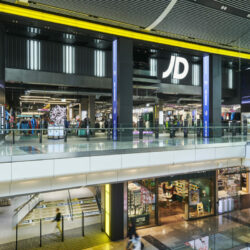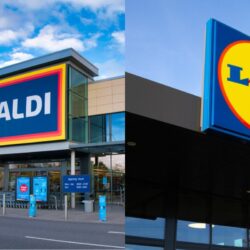As people walk the Melbourne streets their eyes are drawn to a kaleidoscope of retail experiences, from intimate and eclectic basement shops to the slick neon abundance of the world‘s retail giants. Lively streets and malls, historic laneways and iconic arcades light up the city from daybreak to late into the evening.
The ‘Made in Melbourne‘ tag continues to be a powerful selling point. Melbourne‘s independent retailers are sophisticated and edgy; connected and collaborative. They attract customers to considered collections of local luxury fashion, bespoke leather goods, artisan jewellery, design-led furniture, curios and innovative products.
Central Melbourne‘s retail and hospitality sectors are essential to the character and vitality of the city and to its rapidly growing economy. Melbourne showcases the world‘s most prestigious brands and exclusive labels, high-end and boutique from Chanel, Gucci, Dolce & Gabbana, Hermes and Tiffany & Co; global giants Zara, H&M, Uniqlo and Australian brands including Myer, David Jones, Sportsgirl and Rip Curl.
When Swedish department store H&M first opened in Melbourne‘s Bourke Street mall last year it attracted more than 15,000 customers on its first day of trade, making it one of the most successful openings for the brand anywhere. Among the company‘s worldwide network of 3500 stores, Australia‘s group of stores now rank among the best performing in terms of sales.
But it‘s not just the big stores that draw a crowd. Small boutiques flourish in the central city in laneways, above ground, basements and iconic buildings such as the heritage listed Nicholas Building – home to a creative community of artists, designers and makers. Almost half of 514 city clothing and personal accessory shops have a single location and don‘t belong to a chain. They exist happily with the other half made up of ‘high street retailers‘ and fashion centres such as QV and Emporium Melbourne, housing local and international brands.
Clea Garrick, creative director at retailer Limedrop, said that Melbourne was the first choice for the growing fashion label.
“We had five successful pop-up shops in the central city and we jumped at the opportunity to have a permanent space in the Cathedral Arcade in the Nicholas Building,” Ms Garrick said.
“We are part of an exciting creative hub. We engage with other artists, invite them to our launches and get their feedback.”
The ‘Australia on Collins‘ building in Collins Street is undergoing a $30million refurbishment to create St Collins Lane, a luxury fashion destination of 9,000 sq m of retail space with 60 luxury boutiques and a number of premium restaurants.
Developer, LaSalle Investments has signed two coveted Paris-based fashion brands, Maje and Sandro, joining international brands Coach and TAG as key tenants of the centre, opening next year.
The city has experienced outstanding progress, growing from a soulless and barren centre in the 1980s to one of the most people-centric and user friendly cities in the world. Up to a million people come into the city on a busy day and Swanston Street is trodden by more pedestrians than Regent Street in London.
20 years ago the city closed down at sunset – even a decade ago there were half the number of retail and hospitality outlets than compared with today and about half the number of jobs. Major events held in the city such as the hugely successful, Melbourne Fashion Festival, City of Melbourne‘s own Melbourne Spring Fashion Week and the globally recognised and fashion-centric Melbourne Cup are fundamental to attracting local, interstate and international tourists to the city.
The annual Melbourne Spring Fashion Week contributes millions to the economy and instils confidence in Melbourne retail. The premier event is a great showcase
RELATED STORIES


















